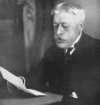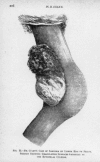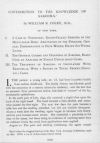The toxins of William B. Coley and the treatment of bone and soft-tissue sarcomas
- PMID: 16789469
- PMCID: PMC1888599
The toxins of William B. Coley and the treatment of bone and soft-tissue sarcomas
Abstract
In 1891, William B. Coley injected streptococcal organisms into a patient with inoperable cancer. He thought that the infection he produced would have the side effect of shrinking the malignant tumor. He was successful, and this was one of the first examples of immunotherapy. Over the next forty years, as head of the Bone Tumor Service at Memorial Hospital in New York, Coley injected more than 1000 cancer patients with bacteria or bacterial products. These products became known as Coley's Toxins. He and other doctors who used them reported excellent results, especially in bone and soft-tissue sarcomas. Despite his reported good results, Coley's Toxins came under a great deal of criticism because many doctors did not believe his results. This criticism, along with the development of radiation therapy and chemotherapy, caused Coley's Toxins to gradually disappear from use. However, the modern science of immunology has shown that Coley's principles were correct and that some cancers are sensitive to an enhanced immune system. Because research is very active in this field, William B. Coley, a bone sarcoma surgeon, deserves the title "Father of Immunotherapy".
Figures



References
-
- Dorfman HD, Czerniak B. Bone Cancers. Cancer. 1995;75 (1):203–210. - PubMed
-
- Starnes CO. Coley's toxins in perspective. Nature. 1992 May 7;357:11–12. - PubMed
-
- Deidier A. Dissertation medicinal et Chirurgical sur les Tumeurs. Paris: 1725.
-
- Busch W. Aus der Sitzung der medicinischen Section vom 13 November 1867. Berl Klin Wochenschr. 1868;5:137.
Publication types
MeSH terms
Substances
Personal name as subject
- Actions
LinkOut - more resources
Full Text Sources
Other Literature Sources
Medical
